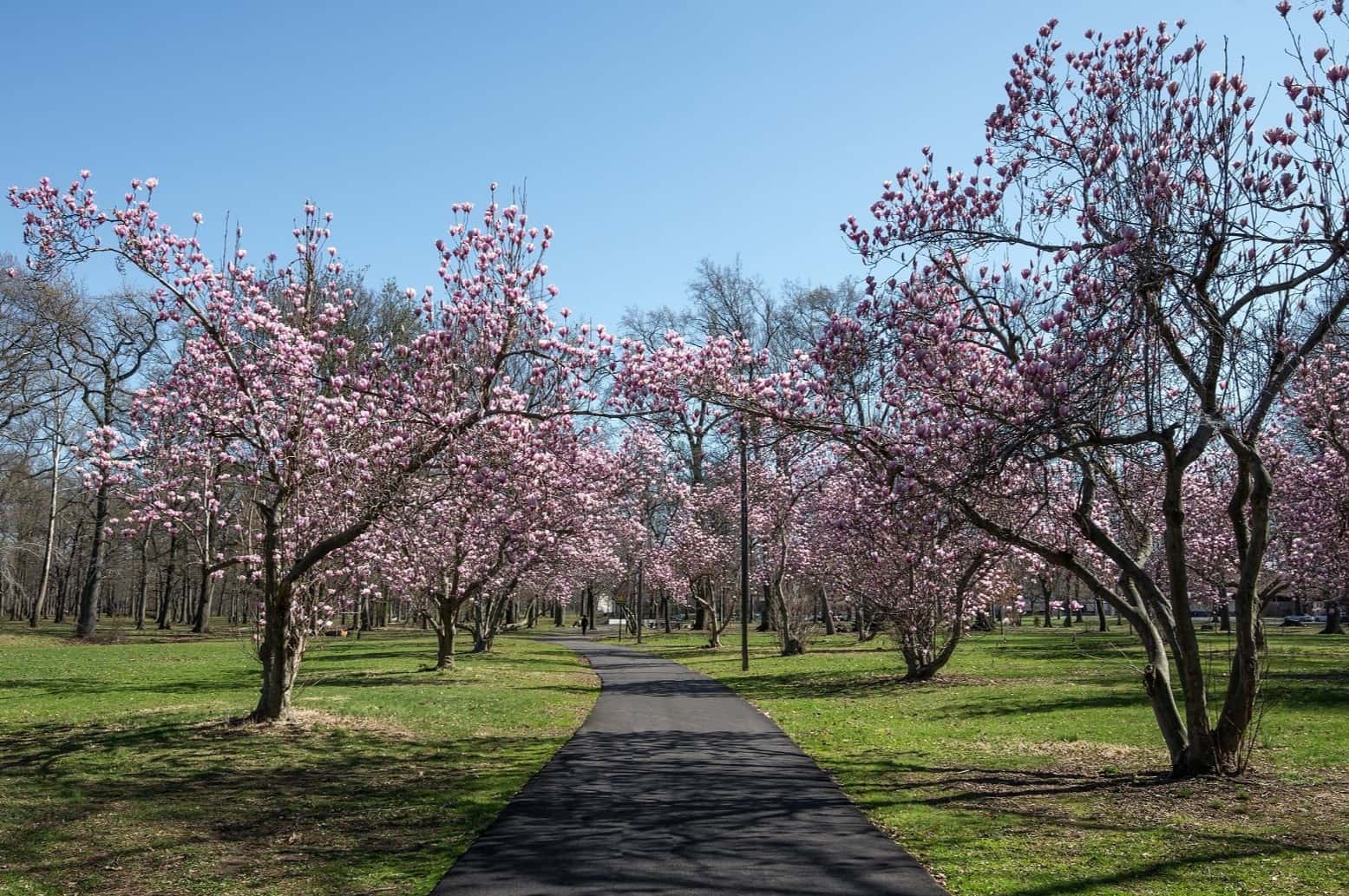
Magnolia ann trees are a sight to behold, gracing landscapes with their stunning beauty and captivating fragrance. These majestic trees are renowned for their large, showy flowers and lush foliage, making them a cherished addition to gardens and parks. In this article, we will delve into 18 fascinating facts about the magnificent magnolia ann tree, shedding light on its rich history, unique characteristics, and ecological significance. From its ancient origins to its symbolic meanings, from its diverse species to its cultural significance, we will explore the enchanting world of magnolia ann trees. Whether you are a nature enthusiast, a gardening aficionado, or simply curious about the wonders of the natural world, join us on a journey to unravel the secrets and splendor of the magnificent magnolia ann tree.
Key Takeaways:
- Magnolia Ann trees, a hybrid of two species, are prized for their stunning blossoms, delightful fragrance, and low maintenance. They are perfect for small gardens and attract pollinators, adding beauty and biodiversity to outdoor spaces.
- With a rich cultural significance and a long blooming season, Magnolia Ann trees are a cherished addition to any garden, offering timeless beauty and effortless elegance. Their compact size and rich history make them a popular choice for ornamental planting.
Magnolia Ann Tree Facts
Magnolia Ann trees are a beloved addition to many landscapes, renowned for their stunning beauty and unique characteristics. Here are 18 fascinating facts about these remarkable trees:
Magnolia Ann trees belong to the Magnoliaceae family.
These trees are part of the Magnoliaceae family, which includes a diverse range of flowering plants known for their captivating blossoms.
The Magnolia Ann tree is a deciduous hybrid.
This tree is a cross between Magnolia liliiflora and Magnolia stellata, resulting in a captivating blend of traits from both parent species.
Magnolia Ann trees are prized for their exquisite blossoms.
The trees produce breathtaking, goblet-shaped flowers that vary in color from deep pink to rich purple, adding a touch of elegance to any garden or landscape.
The blossoms emit a delightful fragrance.
When in full bloom, the Magnolia Ann tree's flowers release a sweet, citrus-like scent that perfumes the surrounding air, creating a sensory delight for all who encounter it.
Magnolia Ann trees are relatively compact.
These trees typically reach a height of 8 to 10 feet, making them an ideal choice for smaller gardens or as a focal point in larger landscapes.
The trees thrive in well-drained, acidic soil.
Magnolia Ann trees prefer soil with good drainage and a slightly acidic pH, creating optimal conditions for their growth and development.
They are cold hardy.
Magnolia Ann trees are resilient in colder climates, with the ability to withstand freezing temperatures, making them a popular choice for gardeners in various regions.
Magnolia Ann trees prefer partial to full sun.
These trees thrive in locations with ample sunlight, although they can also tolerate partial shade, providing flexibility in landscaping and garden design.
The trees are relatively low-maintenance.
Once established, Magnolia Ann trees require minimal maintenance, making them an attractive option for homeowners seeking a beautiful yet easy-to-care-for tree.
Magnolia Ann trees are excellent focal points in landscapes.
With their stunning blossoms and graceful form, these trees serve as captivating focal points, adding visual interest and charm to any outdoor setting.
They are popular choices for ornamental planting.
Due to their striking appearance and manageable size, Magnolia Ann trees are frequently chosen for ornamental planting in gardens, parks, and public spaces.
The trees have a rich cultural significance.
Magnolia Ann trees hold cultural significance in various traditions, symbolizing beauty, purity, and resilience in different societies and folklore.
Magnolia Ann trees have a long blooming season.
Their blossoms typically emerge in early spring and continue to grace the landscape with their beauty well into the season, providing an extended period of visual delight.
They attract pollinators.
The fragrant blossoms of Magnolia Ann trees attract pollinators such as bees and butterflies, contributing to the biodiversity and ecological balance of their surroundings.
Magnolia Ann trees are suitable for container planting.
Their compact size and stunning flowers make them an excellent choice for container planting, allowing individuals with limited outdoor space to enjoy their beauty.
The trees have a rich history.
Magnolia Ann trees have a storied past, with a legacy that spans centuries, enriching landscapes and captivating admirers throughout history.
Magnolia Ann trees are a cherished addition to any garden.
With their enchanting blossoms, delightful fragrance, and manageable size, Magnolia Ann trees are a cherished addition to any garden, offering timeless beauty and effortless elegance.
The Magnolia Ann tree, a captivating hybrid of Magnolia liliiflora and Magnolia stellata, is renowned for its stunning blossoms and graceful form. This deciduous tree belongs to the Magnoliaceae family and is prized for its compact size, making it an ideal choice for various landscapes. With its captivating goblet-shaped flowers and delightful fragrance, the Magnolia Ann tree adds a touch of elegance to gardens and outdoor spaces. Thriving in well-drained, acidic soil and exhibiting resilience in colder climates, these trees are relatively low-maintenance, making them a popular choice for ornamental planting. With a rich cultural significance and a long blooming season, Magnolia Ann trees are not only visually captivating but also contribute to the biodiversity of their surroundings by attracting pollinators. Whether planted in the ground or in containers, these trees have a rich history and continue to be a cherished addition to gardens, parks, and public spaces, enchanting admirers with their timeless beauty and effortless elegance.
Conclusion
In conclusion, the magnolia ann tree is a remarkable addition to any landscape, offering stunning beauty and a rich history. Its large, fragrant flowers and lush foliage make it a standout feature in gardens and parks. With proper care and maintenance, this tree can thrive for generations, providing a source of joy and natural elegance. Whether you're a gardening enthusiast or simply appreciate the wonders of nature, the magnolia ann tree is a captivating choice that continues to enchant and inspire.
FAQs
What is the best time to plant a magnolia ann tree?
The best time to plant a magnolia ann tree is in the early spring or fall, when the weather is mild and the tree has a chance to establish its roots before the extreme temperatures of summer or winter.
How often should a magnolia ann tree be watered?
Magnolia ann trees should be watered deeply once a week, especially during dry spells, to ensure that the roots receive adequate moisture. However, it's important to avoid overwatering, as this can lead to root rot.
Was this page helpful?
Our commitment to delivering trustworthy and engaging content is at the heart of what we do. Each fact on our site is contributed by real users like you, bringing a wealth of diverse insights and information. To ensure the highest standards of accuracy and reliability, our dedicated editors meticulously review each submission. This process guarantees that the facts we share are not only fascinating but also credible. Trust in our commitment to quality and authenticity as you explore and learn with us.


